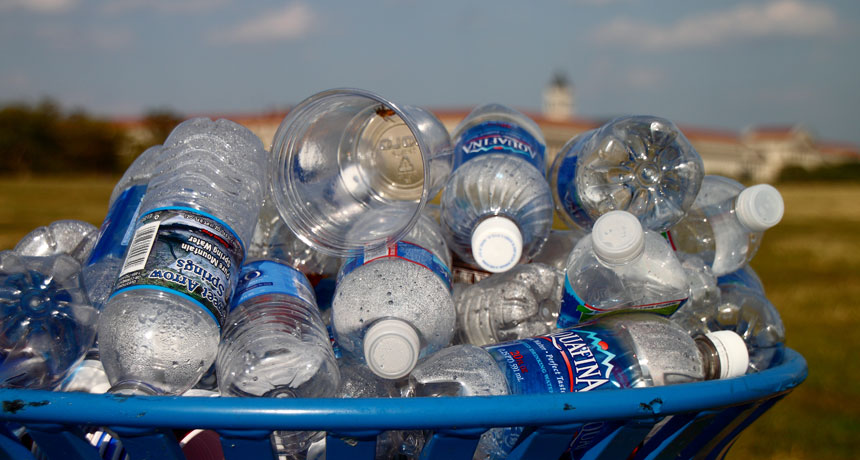Questions for ‘Getting in your head’

When people discover that recycling is the norm, they are more likely to recycle.
Mr.TinDC/Flickr (CC BY-ND 2.0)
To accompany feature “Cool Jobs: Getting in your head”
SCIENCE
Before Reading:
1. When you think of a psychologist, what kind of work do you picture that person doing?
2. Why would psychologists study non-human animals in order to understand the human mind?
During Reading:
1. What do psychology researchers study in order to understand how and why people do the things they do?
2. Why don’t lab studies of impulsivity in rats and pigeons provide a full picture of animals’ willingness to wait for a reward?
3. What is the evidence that chimpanzees are more patient about waiting for food than bonobos are?
4. What is the comparative method?
5. According to the story, why did Juliane Kaminski begin studying dogs as part of her research on social cognition?
6. How did Kaminski show that dogs are able to understand what it means when a human points at something?
7. What does the fact that young puppies can follow human gestures suggest?
8. How long have dogs lived with people?
9. What happened when researchers began giving people information about how much their neighbors recycled? What is another area of human behavior where psychologists have found similar patterns?
10. What is a norm?
After Reading
1. There are plenty of human behaviors that psychologists might wish to influence in one direction or another, for the sake of ensuring a healthier or happier society. Do you think it ethical to “nudge” people to behave in a certain way by manipulating their understanding of social norms? Explain why or why not.
2. Psychologists sometimes study non-human animals such as rats, mice, birds and apes in order to understand certain aspects of behavior. Name at least three advantages to studying non-human animals instead of people?
MATHEMATICS
1. In the story, chimps would wait 120 seconds for a bigger group of grapes; bonobos would wait only 70 seconds. The chimps’ maximum wait time is what percentage of the bonobos’ maximum patience? Now describe it the other way. What share of the chimps’ patience is the bonobo maximum wait period?
2. In the third person profiled in this story, a computer trial mentioned 11 percent of people turning off computers when a sign asked them to do so. If 546 people used the lab, how many would have turned off the computer when asked by a sign to do so? (Keep in mind, some rounding may occur.)